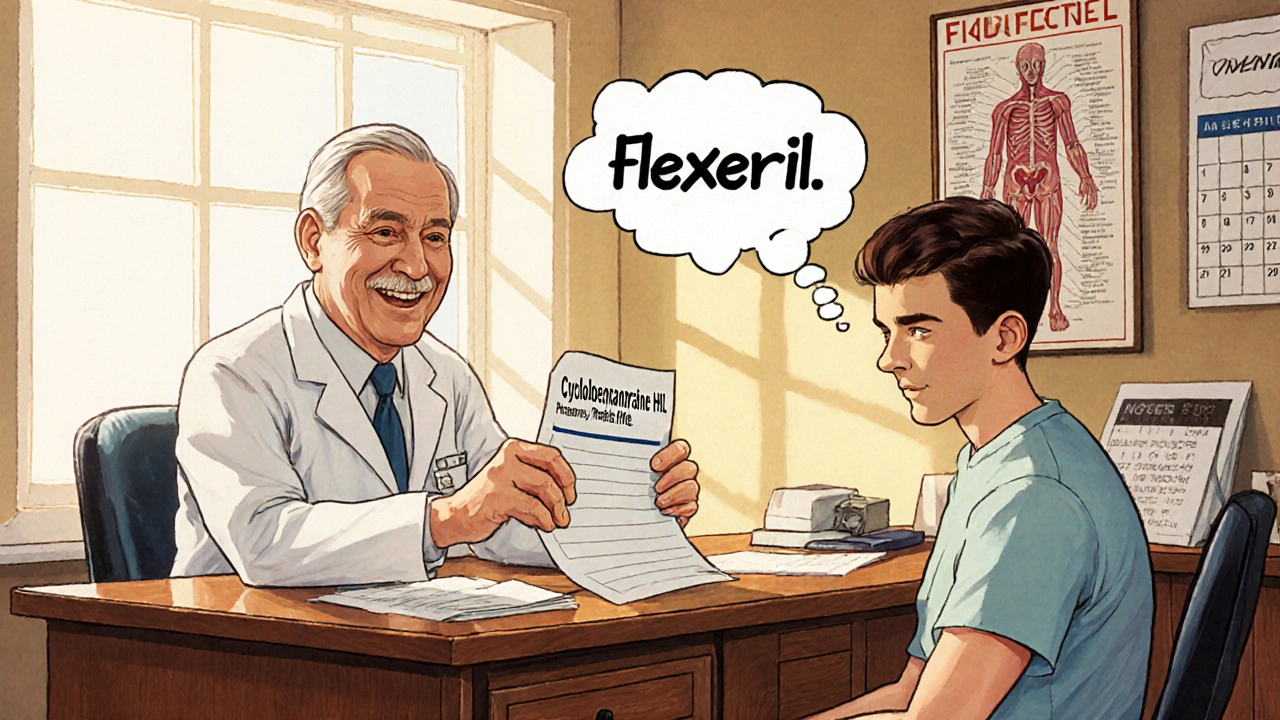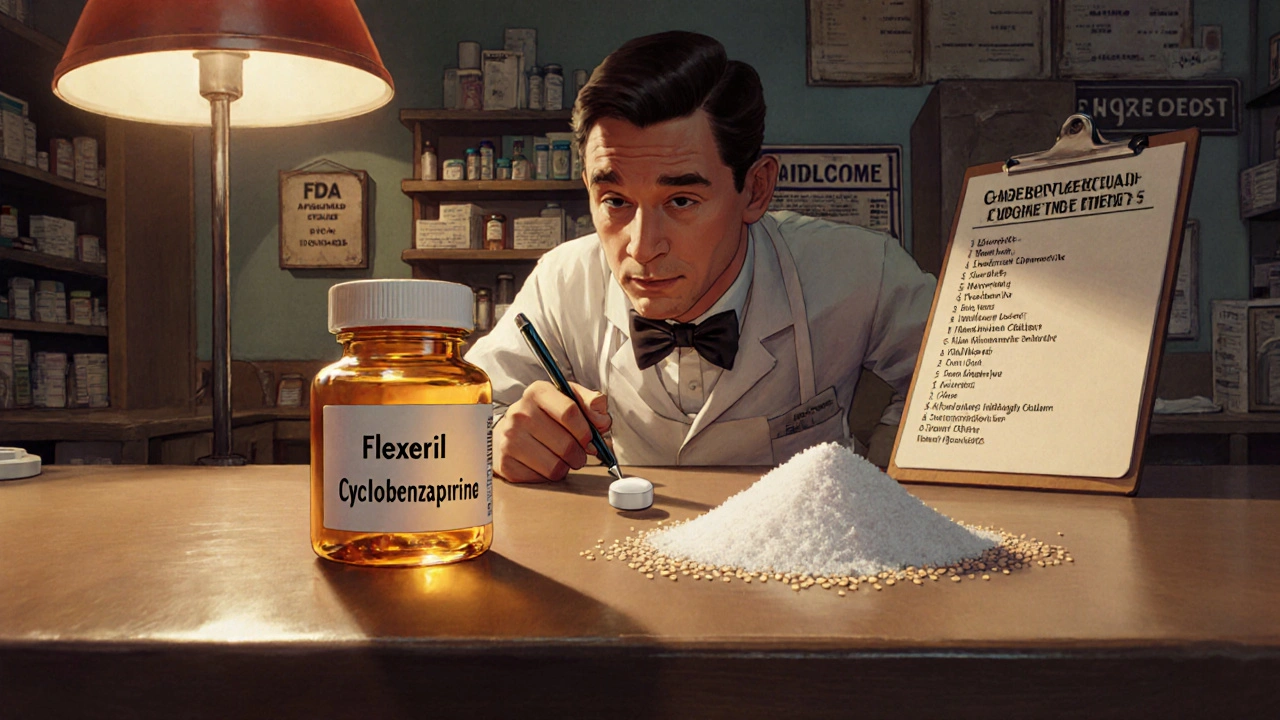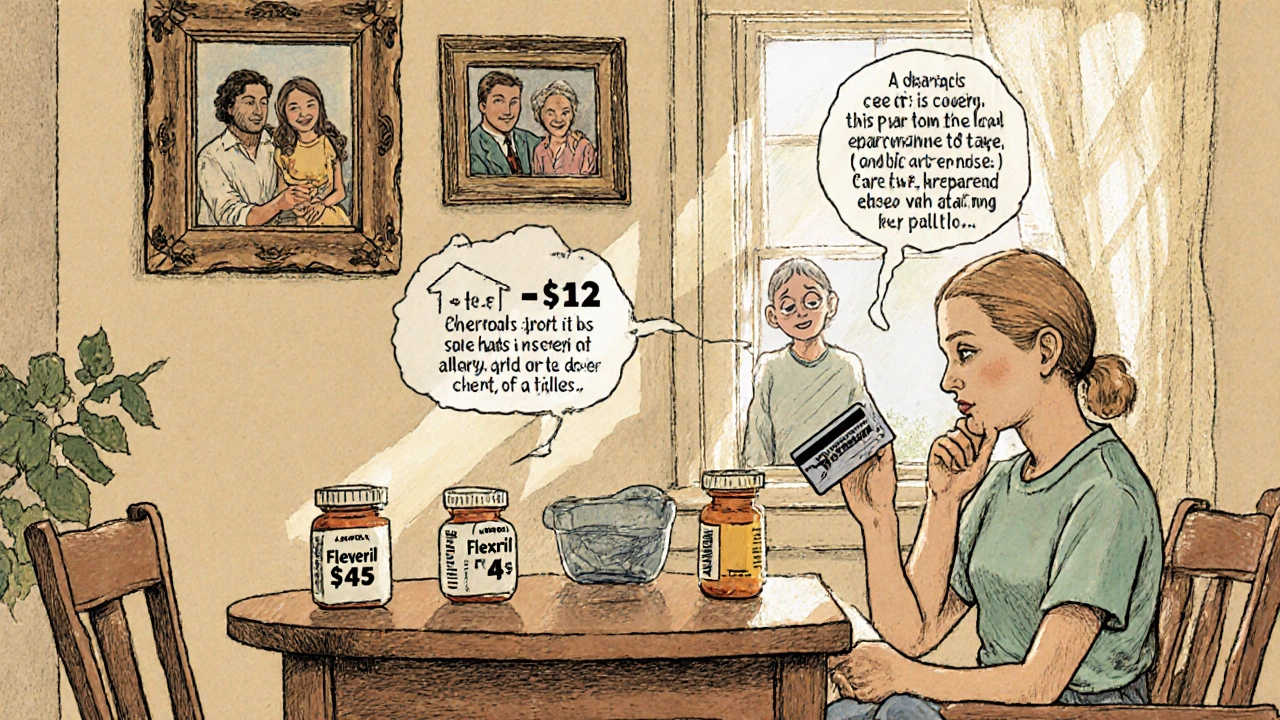Cyclobenzaprine HCL vs Generic Alternatives: Key Differences Explained
 Oct, 26 2025
Oct, 26 2025
When a doctor prescribes a muscle relaxant for a sore neck or back, the name that shows up on the pharmacy label can be a surprise. Is there a real benefit to the brand version, or will a generic work just as well? This article breaks down the most important differences between Cyclobenzaprine HCL and the generic versions you’ll find on the shelf.
What is Cyclobenzaprine HCL?
Cyclobenzaprine HCl is a prescription muscle relaxant that belongs to the tricyclic antidepressant class. It works by blocking pain pathways in the central nervous system, which reduces muscle spasm and improves mobility. The drug was first approved by the U.S. Food and Drug Administration (FDA) in 1977 under the brand name Flexeril. Typical dosing is 5‑10 mg three times a day, with a recommended treatment period of two to three weeks.
How do generic alternatives get approved?
After the original patent expires, other manufacturers can file an Abbreviated New Drug Application (ANDA) with the FDA. To earn approval, the generic must demonstrate that it delivers the same bioavailability - usually 80‑125 % of the brand’s exposure - and that its half‑life matches the reference product. The active ingredient is identical (cyclobenzaprine hydrochloride), but fillers, binders, and colorants can differ.
Pharmacology: Brand vs. Generic
Both versions share the same mechanism of action, but subtle formulation choices can affect how quickly the drug is absorbed. For example, the brand Flexeril uses a gelatin capsule that dissolves quickly, while many generics use a tablet with a slower‑release matrix. In practice, most patients report comparable pain relief, but a small subset notices a difference in onset - usually within the first hour of dosing.
Formulation and Inactive Ingredients
Inactive ingredients are where the two products diverge the most. The brand contains lactose, magnesium stearate, and a small amount of titanium dioxide for color. Generic tablets might replace lactose with corn starch or use a different anti‑caking agent. These differences matter for people with allergies or intolerances. If you’re sensitive to dairy, request a lactose‑free version or ask your pharmacist to confirm the filler list.

Cost and Insurance Coverage
Cost is often the deciding factor. In 2025 the average retail price for a 30‑day supply of Flexeril is about $45, while generic equivalents range from $8 to $15. Most private insurers treat the brand and generic the same for co‑pay purposes, but some Medicare plans apply higher tier pricing to the brand, making the generic a clear money‑saver.
Safety Profile and Side Effects
The safety data for both brand and generic come from the same clinical trials. Common adverse effects include dry mouth, drowsiness, and blurred vision. Because generics may have different excipients, rare reactions such as skin rash or gastrointestinal upset can appear more frequently in a subset of patients. Always review the full patient information leaflet before starting therapy.
Choosing the Right Option for You
- Allergy concerns: Check the inactive ingredient list.
- Cost sensitivity: Generic is usually cheaper.
- Insurance tiering: Verify your plan’s formulary.
- Onset speed: If you need rapid relief, the brand capsule may work a bit faster.
Talk with your prescriber or pharmacist about any of these factors. They can help you decide whether the brand’s convenience outweighs the generic’s savings.

Quick Comparison Table
| Feature | Brand (Flexeril) | Generic |
|---|---|---|
| Manufacturer | Pfizer (original) | Various (e.g., Teva, Mylan) |
| Formulation | Gelatin capsule | Tablet or capsule - varies by maker |
| Inactive Ingredients | Lactose, magnesium stearate, titanium dioxide | Starch, cellulose, microcrystalline cellulose, other fillers |
| Typical Price (30‑day) | ≈ $45 | ≈ $8‑$15 |
| FDA Approval Path | New Drug Application (NDA) | Abbreviated New Drug Application (ANDA) |
| Bioavailability | Baseline reference (100 %) | 80‑125 % of brand |
| Half‑Life | ≈ 18 hours | ≈ 18 hours (same) |
Common Questions
Is the brand version more effective?
Clinical studies show no statistically significant difference in overall pain relief. Any perceived advantage usually comes from faster capsule dissolution, not from the active ingredient itself.
Can I switch from brand to generic without a doctor’s note?
Most pharmacies will substitute a generic automatically unless the prescription is marked “brand medically necessary.” It’s still wise to let your prescriber know, especially if you have a history of allergic reactions.
Do generics have the same side‑effect profile?
The active side effects (dry mouth, drowsiness) are identical. However, excipients can trigger rare sensitivities, so read the label carefully.
What should I do if I experience a rash after switching?
Stop the medication and contact your healthcare provider. They may recommend an alternate generic formulation or switch back to the brand.
Are there any drug interactions unique to the brand?
No. Both brand and generic share the same CYP1A2 metabolic pathway, so interaction warnings are identical (e.g., avoid concurrent MAO inhibitors).
Bottom Line
If cost is your main concern, the generic version of Cyclobenzaprine HCL provides the same therapeutic effect for a fraction of the price. If you have a specific allergy to an inactive ingredient, double‑check the generic’s filler list or stick with the brand. In most cases, a conversation with your pharmacist will clear up any confusion, ensuring you get safe, effective relief without overpaying.

Barbara Ventura
October 26, 2025 AT 21:59Wow, the brand‑generic dance is more nuanced than I expected; the fillers, the price tags, and the tiny differences in onset-lots to think about, right? It’s like comparing a gourmet coffee to a decent instant blend, both wake you up, but the aroma? Different!
laura balfour
November 10, 2025 AT 13:59Alright, strap in! The EMA says the bioavailability window of 80‑125 % isn’t just a random number-it’s the gatekeeper for therapeutic parity. I’ve seen patients swear by the brand’s rapid dissolve, yet others chant “generic all the way!”-the truth sits in that grey zone where individual metabolism, dietary habits, and even the color of the pill play a part. Also, don’t forget the lactose issue; if you’re dairy‑sensitive, the brand can be a minefield. Bottom line: read the inactive list, talk to your pharmacist, and let science guide your wallet.
Alisha Cervone
November 25, 2025 AT 05:59Generics work fine, save cash.